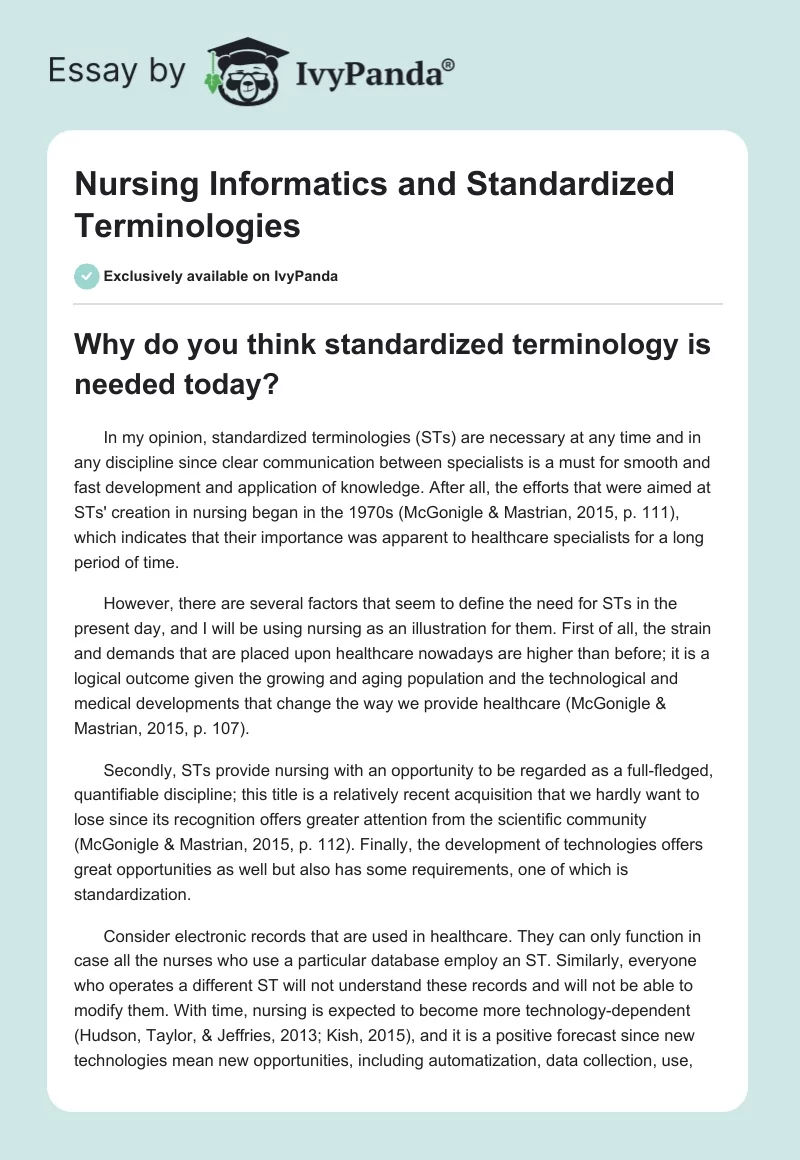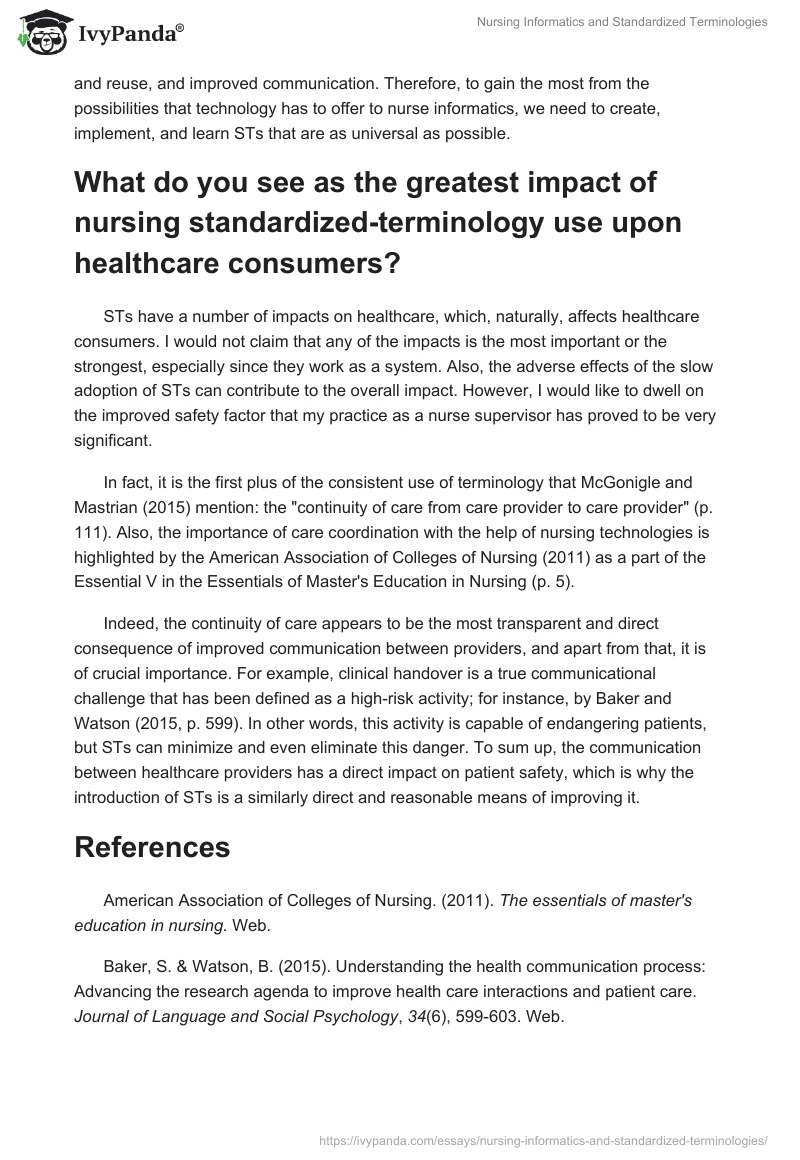Why do you think standardized terminology is needed today?
In my opinion, standardized terminologies (STs) are necessary at any time and in any discipline since clear communication between specialists is a must for smooth and fast development and application of knowledge. After all, the efforts that were aimed at STs’ creation in nursing began in the 1970s (McGonigle & Mastrian, 2015, p. 111), which indicates that their importance was apparent to healthcare specialists for a long period of time.
However, there are several factors that seem to define the need for STs in the present day, and I will be using nursing as an illustration for them. First of all, the strain and demands that are placed upon healthcare nowadays are higher than before; it is a logical outcome given the growing and aging population and the technological and medical developments that change the way we provide healthcare (McGonigle & Mastrian, 2015, p. 107).
Secondly, STs provide nursing with an opportunity to be regarded as a full-fledged, quantifiable discipline; this title is a relatively recent acquisition that we hardly want to lose since its recognition offers greater attention from the scientific community (McGonigle & Mastrian, 2015, p. 112). Finally, the development of technologies offers great opportunities as well but also has some requirements, one of which is standardization.
Consider electronic records that are used in healthcare. They can only function in case all the nurses who use a particular database employ an ST. Similarly, everyone who operates a different ST will not understand these records and will not be able to modify them. With time, nursing is expected to become more technology-dependent (Hudson, Taylor, & Jeffries, 2013; Kish, 2015), and it is a positive forecast since new technologies mean new opportunities, including automatization, data collection, use, and reuse, and improved communication. Therefore, to gain the most from the possibilities that technology has to offer to nurse informatics, we need to create, implement, and learn STs that are as universal as possible.
What do you see as the greatest impact of nursing standardized-terminology use upon healthcare consumers?
STs have a number of impacts on healthcare, which, naturally, affects healthcare consumers. I would not claim that any of the impacts is the most important or the strongest, especially since they work as a system. Also, the adverse effects of the slow adoption of STs can contribute to the overall impact. However, I would like to dwell on the improved safety factor that my practice as a nurse supervisor has proved to be very significant.
In fact, it is the first plus of the consistent use of terminology that McGonigle and Mastrian (2015) mention: the “continuity of care from care provider to care provider” (p. 111). Also, the importance of care coordination with the help of nursing technologies is highlighted by the American Association of Colleges of Nursing (2011) as a part of the Essential V in the Essentials of Master’s Education in Nursing (p. 5).
Indeed, the continuity of care appears to be the most transparent and direct consequence of improved communication between providers, and apart from that, it is of crucial importance. For example, clinical handover is a true communicational challenge that has been defined as a high-risk activity; for instance, by Baker and Watson (2015, p. 599). In other words, this activity is capable of endangering patients, but STs can minimize and even eliminate this danger. To sum up, the communication between healthcare providers has a direct impact on patient safety, which is why the introduction of STs is a similarly direct and reasonable means of improving it.
References
American Association of Colleges of Nursing. (2011). The essentials of master’s education in nursing. Web.
Baker, S. & Watson, B. (2015). Understanding the health communication process: Advancing the research agenda to improve health care interactions and patient care. Journal of Language and Social Psychology, 34(6), 599-603. Web.
Hudson, K., Taylor, L., & Jeffries, P. (2013). Incorporating informatics in clinical education through clinical simulations. Web.
Kish, L. (2015). 8 takeaways from Topol’s latest: ‘The patient will see you now: The future of medicine is in your hands’. Web.
McGonigle, D. & Mastrian, K. (2015). Nursing informatics and the foundation of knowledge (3rd ed.). Burlington, MA: Jones and Bartlett.


